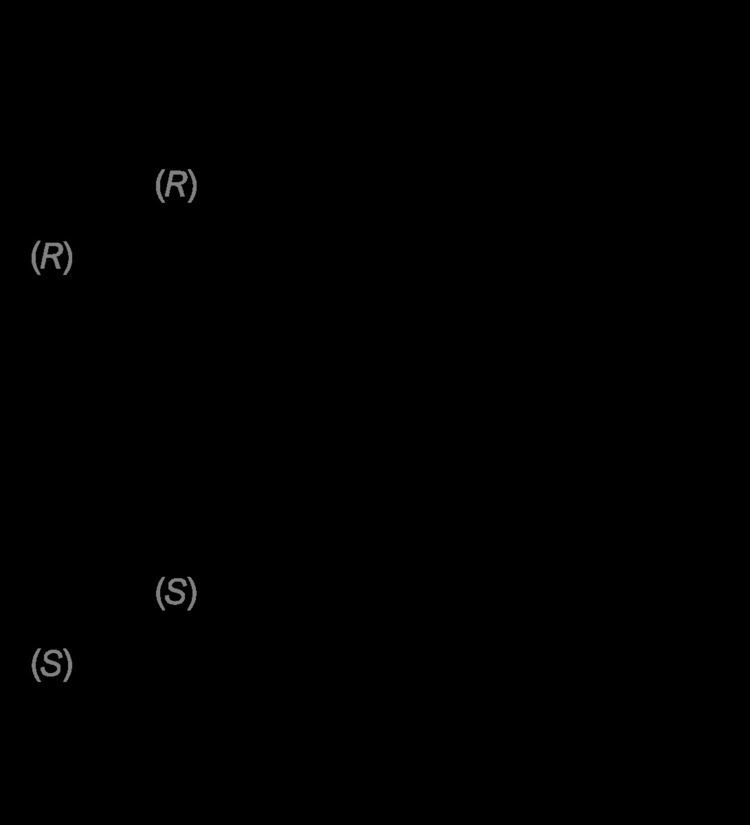Trade names Cesamet, Canemes MedlinePlus a607048 ATC code A04AD11 (WHO) CAS ID 51022-71-0 | AHFS/Drugs.com Monograph Routes ofadministration By mouth (capsules) Molar mass 372.541 g/mol | |
 | ||
Pregnancycategory US: C (Risk not ruled out) | ||
Nabilone is a synthetic cannabinoid with therapeutic use as an antiemetic and as an adjunct analgesic for neuropathic pain. It mimics tetrahydrocannabinol (THC), the primary psychoactive compound found naturally occurring in Cannabis.
Contents
The FDA in the USA has indicated nabilone for chemotherapy-induced nausea/vomiting. In other countries, such as Canada, it is widely used as an adjunct therapy for chronic pain management. Numerous trials and case studies have demonstrated modest effectiveness for relieving fibromyalgia and multiple sclerosis.
Nabilone is a racemic mixture consisting of (S,S)-(+)- and (R,R)-(−)-isomers (cis-trans isomerism).
Medical uses
Nabilone is used to treat nausea and vomiting in people under chemotherapy.
Nabilone has shown modest effectiveness in relieving fibromyalgia. A 2011 systematic review of cannabinoids for chronic pain determined there was evidence of safety and modest efficacy for some conditions.
The main settings that have seen published clinical trials of nabilone include movement disorders such as parkinsonism, chronic pain, dystonia and spasticity neurological disorders, multiple sclerosis, and the nausea of cancer chemotherapy. Nabilone is also effective in the treatment of inflammatory bowel disease, especially ulcerative colitis. Medical cannabis patients report that nabilone is more similar in effect to cannabidiol (CBD) than tetrahydrocannabinol (THC), indicating that it has more of a therapeutic effect on the body than a "high" effect on the mind.
A study comparing nabilone with metoclopramide, conducted before the development of modern 5-HT3 antagonist anti-emetics such as ondansetron, revealed that patients taking cisplatin chemotherapy preferred metoclopramide, while patients taking carboplatin preferred nabilone to control nausea and vomiting.
Research
Nabilone is sometimes used for nightmares in PTSD, but there have not been studies longer than nine weeks, so effects of longer term use are not known. Nabilone has also been used for medication overuse headache.
Pharmacokinetics
Nabilone is given in 1 or 2 mg doses multiple times a day up to a total of 6 mg. It is completely absorbed from oral administration and highly plasma protein bound. Multiple P450 enzymes extensively metabolize nabilone to various metabolites that have not been fully characterized.
Adverse effects
Nabilone can increase—rather than decrease—post-operative pain. In the treatment of fibromyalgia, adverse effects limits the useful dose. Adverse effects of nabilone include, but are not limited to: dizziness/vertigo, euphoria, drowsiness, dry mouth, ataxia, sleep disturbance, dysphoria, headache, nausea, disorientation, depersonalization, asthenia.
Society and culture
Nabilone was originally developed by Eli Lilly and Company; Lilly received FDA approval in 1985 to market it, but withdrew that approval in 1989 for commercial reasons. Valeant Pharmaceuticals acquired the rights from Lilly in 2004. Valeant tried and failed to get the drug approved in 2005 and then succeeded in 2006.
In 2007 Valeant acquired the UK and EU rights to market nabilone from Cambridge Laboratories.
Nabilone was approved in Austria to treat chemotherapy-induced nausea in 2013; it was already approved in Spain for the same indication and was legal in Belgium to treat glaucoma, spasticity in Multiple Sclerosis, wasting from AIDS, and chronic pain.
